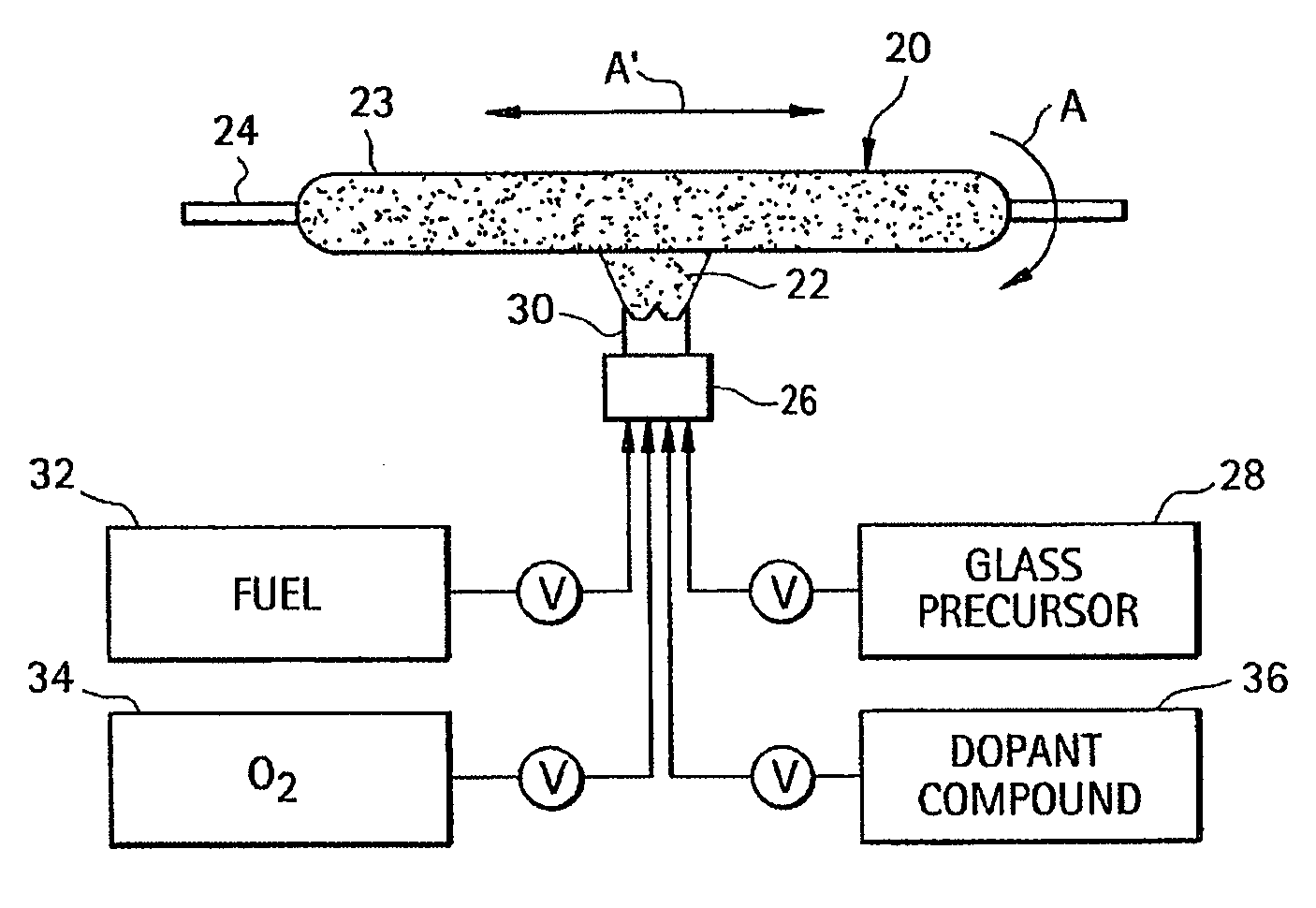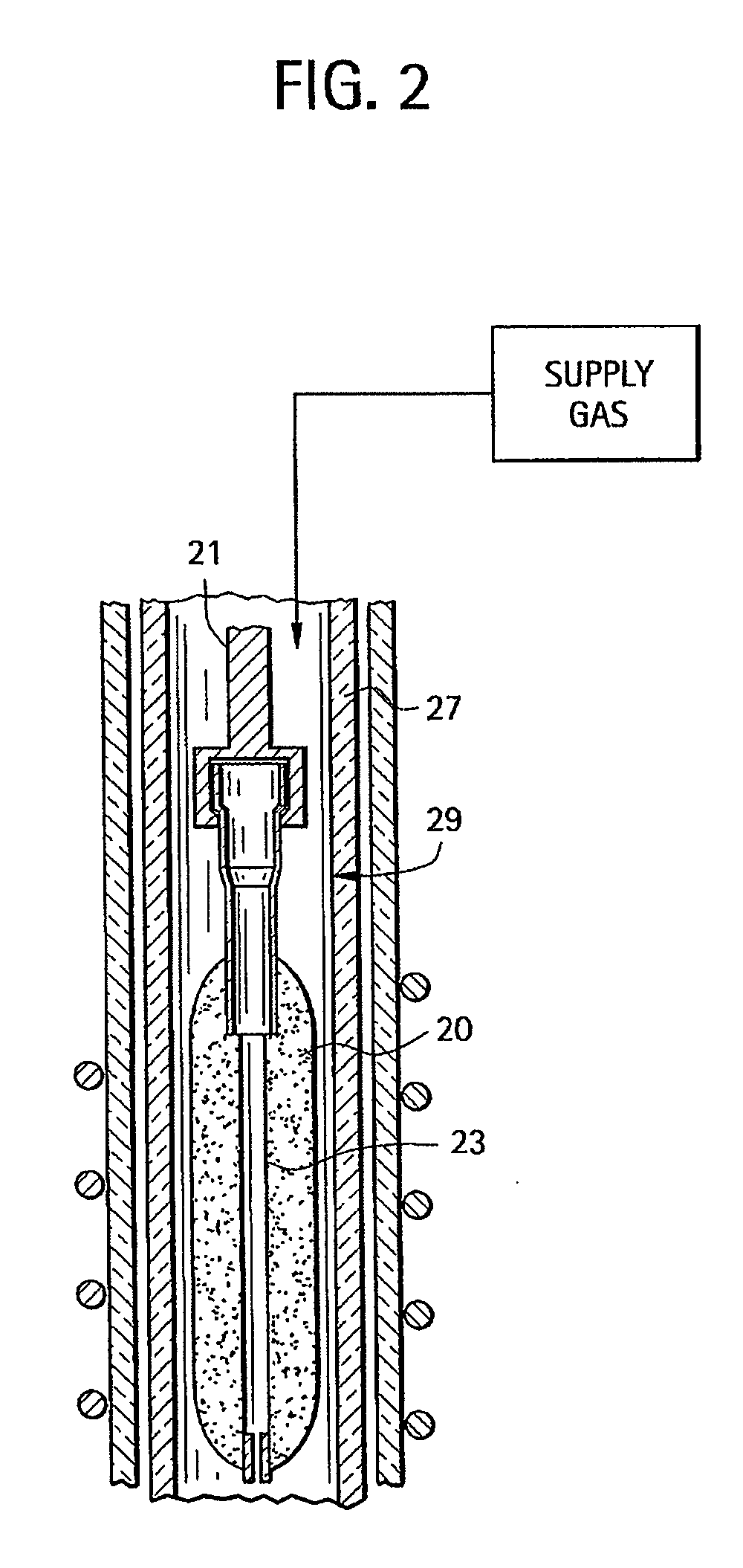Microstructured optical fibers and methods
a microstructured optical fiber and microstructure technology, applied in the field of optical fibers, can solve the problems of affecting the attenuation of the fiber, reshaping or deformation, and low productivity, and achieve the effects of improving the bend performance of the optical fiber, improving the attenuation, and improving the refractive index
- Summary
- Abstract
- Description
- Claims
- Application Information
AI Technical Summary
Benefits of technology
Problems solved by technology
Method used
Image
Examples
Embodiment Construction
[0026]The methods of the present invention utilizes preform consolidation conditions which are effective to result in a significant amount of gases being trapped in the consolidated glass blank, thereby causing the formation of voids in the consolidated glass optical fiber preform. Rather than taking steps to remove these voids, the resultant preform is used to form an optical fiber with voids therein.
[0027]During the manufacture of transmission optical fibers by conventional soot deposition processes such as the outside vapor deposition (OVD) process or the vapor axial deposition (VAD) process, silica and doped silica particles are pyrogenically generated in a flame and deposited as soot. In the case of OVD, silica soot preforms are formed layer-by-layer by deposition of the particles on the outside of a cylindrical target rod by traversing the soot-laden flame along the axis of the cylindrical target. Such porous soot preforms are subsequently treated with a drying agent (e.g., ch...
PUM
| Property | Measurement | Unit |
|---|---|---|
| Temperature | aaaaa | aaaaa |
| Length | aaaaa | aaaaa |
| Fraction | aaaaa | aaaaa |
Abstract
Description
Claims
Application Information
 Login to View More
Login to View More - R&D
- Intellectual Property
- Life Sciences
- Materials
- Tech Scout
- Unparalleled Data Quality
- Higher Quality Content
- 60% Fewer Hallucinations
Browse by: Latest US Patents, China's latest patents, Technical Efficacy Thesaurus, Application Domain, Technology Topic, Popular Technical Reports.
© 2025 PatSnap. All rights reserved.Legal|Privacy policy|Modern Slavery Act Transparency Statement|Sitemap|About US| Contact US: help@patsnap.com



